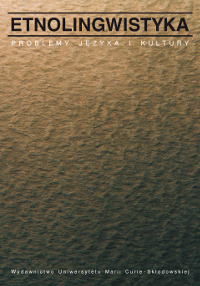Rytuał a stereotyp. Podobieństwa oraz różnice genetyczne i funkcjonalne
RITUAL VS. STEREOTYPE-. SIMILARITIES AS WELL AS GENETIC AND FUNCTIONAL DIFFERENCES
Author(s): Agata MałyskaSubject(s): Anthropology, Language and Literature Studies, Applied Linguistics, Communication studies
Published by: Wydawnictwo Naukowe Uniwersytetu Marii Curie-Sklodowskiej
Keywords: ritual vs. stereotype; human cognition; social communication; the ritualization of language; gradable features
Summary/Abstract: An attempt is made in the article to compare the concepts of ritual and stereotype, which because of their interdisciplinary nature, partial semantic overlap, and as a colloquial and scientific approach, are semantically vague and often identified with other related concepts. In order to define them more precisely, a juxtaposition has been made of features which make up the two concepts, relating to their origin, structural and functional characteristics (attributed to them on the extralinguistic and linguistic basis).The Polish rytuał ‘ritual’ and stereotyp ‘stereotype’ have different origins. The former has been used since the 16th c., first to refer to a book describing church ceremonies called Agenda, then in the sense of „a pattern of behaviour according to an established external norm”. The term stereotyp has been used since the 18th c. to refer to a printing process performed with ready-made hard matrices. The transformations which have taken place within the two concepts have rendered them important. for sciences which deal with cognition, language and social communication. The analysis has revealed that although there exist features shared by both concepts (the stabilization of form, conventionalization of content, repetitiveness, constancy), it is improper to identify one with the other. Rytuał is defined as a performative action, characterized by institutionalization, a connection with the pragmatic situation and a necessity of application caused by social pressure. Stereotyp, in turn, is understood as a mental category, as a picture in the mind. It is closely connected with a cognitive function and serves as a categorizing tool. It is possible to find a common research platform for both (for instance, the language of politics has been depicted both as a manifestation of language being stereotyped and ritualized) but one must bear in mind that the features they are characterized by are gradable (i.e. the social nature of a ritual is for a stereotype a secondary trait) and the choice of the term depends on the purpose of research.
Journal: Etnolingwistyka. Problemy Języka I Kultury
- Issue Year: 14/2002
- Issue No: 14
- Page Range: 197-216
- Page Count: 20
- Language: Polish

